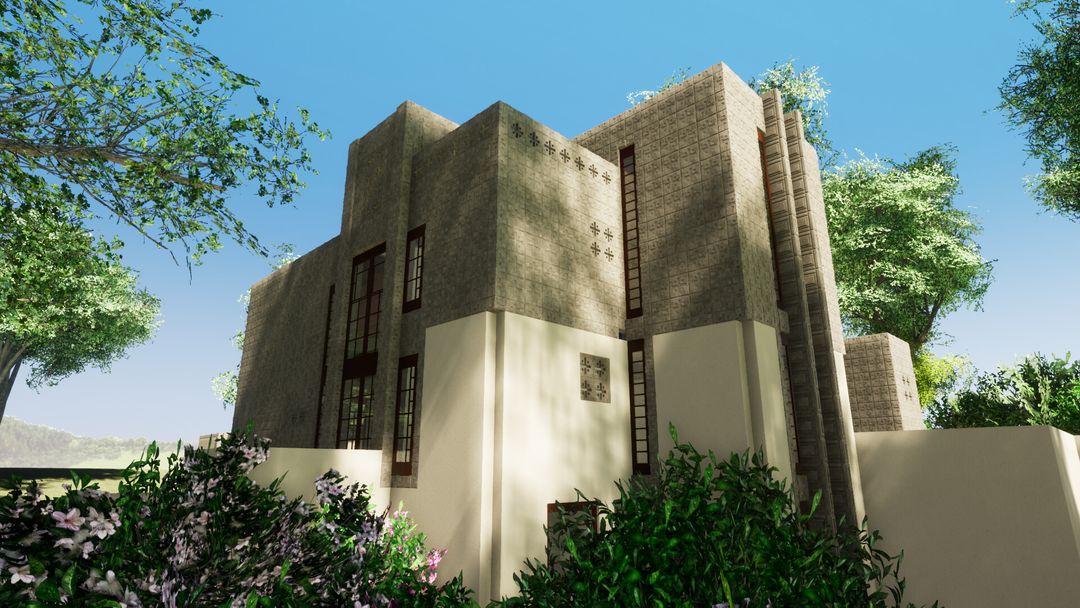Table Of Content

This makes it all the more exciting to watch a television show that shines new light on his Los Angeles architecture, designed during one of the darkest periods of Wright’s life. “We would catch concrete blocks, the coseríamos together with steel joints, and therefore would build gaskets that would be filled with concrete after being placed. We would do the double walls, sticking up inside and the other outside-spaces continuous gaps in between, so that everything would be cool in summer, warm in winter and always dry. In addition, the inner blocks would be a good background for good books and old paintings and tapestries. Instead of having a fire trap, my client would have a house fireproof “- Frank Lloyd Wright. Wright, which had already experimented with concrete blocks at the Hollyhock House, was not satisfied with merely decorative use of them.
Millard House by Frank Lloyd Wright
PGCPS superintendent warns of 'catastrophic' cuts if two proposed Md. bills pass - WJLA
PGCPS superintendent warns of 'catastrophic' cuts if two proposed Md. bills pass.
Posted: Wed, 07 Feb 2024 08:00:00 GMT [source]
Wright passed this order to your son Lloyd, who finished it in 1926 in the style of the project of his father. The architect respected and appreciated Mrs. Millard for his artistic sense and because it was also open to hearing proposals of the architect and the use of new ideas such as textiles blocks. Wright also recalled years later how proud he was of himself have a client who, after entrusting a work and live in it, again turn to him to build a second home. Moreover, by adding ornamental designs to mass-produced blocks, Wright hoped the blocks could become a "masonry fabric capable of great variety in architectural beauty." Each of Wright's concrete homes has its own unique block design, and the Millard House features a modernized pre-Columbian motif of a central cross and a square in each corner.
Frank Lloyd Wright’s Millard House (La Miniatura)

The textile blocks are square and have dimensions of about 15 cm square and about 7.5 cm thick. Along the edges of each piece are no crevices where armor and placed the mortar to build the walls. Each design has variants to set opaque walls or walls that filter the light. Both structures are placed on the basis of a ravine in a scenic hillside. Outside the house there is a pond that reflects the geometric finish of the facade.
More From the Los Angeles Times
The home represents Wright’s first foray into modular building, and his efforts to break away from the “prairie house” architectural style that had become synonymous with his name. He turned to concrete as his new building material in 1906 when Alice Millard commissioned him to construct her second home on a lush green site located in Pasadena. Wright challenged himself to only create something beautiful from what he called “the cheapest (and ugliest) thing in the building world”, and to develop a new low-cost flexible building system with the same material.
A balcony at the third story overlooks the living room below, and the third floor also hosts what was Millard’s bedroom and a beautiful outdoor terrace. While the load-bearing walls are constructed of concrete blocks, the interior walls consist of wooden studs and plaster. The floors are either concrete or wood, and the ceilings are plaster or exposed redwood.
Trips to both the Robie House in Chicago, an epitome of Wright’s Prairie Style period and his time in the Midwest, as well as a look at the A.D. German Warehouse, a odd project in southwest Wisconsin, and the first use of his Mayan block patterns, shows how Wright arrived at these unique projects. Despite these drawbacks, the home has endured and La Miniatura was purchased by David Zander, an architecture enthusiast and president of commercial/music video production company MJZ, back in the late 90s.

In 1923, rare book dealer Alice Millard commissioned Frank Lloyd Wright to build a residence in an upscale neighborhood adjacent to the Rose Bowl in Pasadena. Wright had already designed her Highland Park, Illinois, house in 1906. Surrounded by large trees, the house becomes part of the gardens, rather than dominating them. Two preexisting eucalyptus trees rise out of the designed gardens, and the house overlooks a pond.
thoughts on “Millard House In Pasadena by Frank Lloyd Wright”
A powder room and laundry/mudroom with built-in cubbies, and a dog/utility shower complete the first floor. The architect was proud of the homes, at one point writing of the Millard House that he “would have rather built this little house in Pasadena than St. Peter’s in Rome. Clearly an exaggeration, it spoke to pride of authorship in the quirky gem of a home. Frank Lloyd Wright’s career casts a long shadow on the world of architecture and architectural criticism.
More About La Miniatura and More of California's Wright Sites
La Miniatura is three stories, measuring 2,400 square feet in total with nearly an acre of gardens. The first floor has the kitchen, dining room and maid’s room, and the dining room opens to a terrace with a reflecting pool that connects the house with the outdoors. The main entrance is located on the second floor along with a guest room and a large two-story living room with a beautiful concrete block fireplace.
Alice Millard died in 1938 being respected for his work and contribution to the cultural growth of southern California. The fact that he was willing to open their home to students and friends helped form a knowledge network among book lovers, like-minded people and environment of Frank Lloyd Wright. The coincidence of architect and Mrs. Millard in time and choosing the right solar, made possible the creation of one of the best known works by students of modern architecture. Hawthorne's theory has drawn mixed reactions from Wright scholars and architecture historians, which he discusses in the documentary (even granting some screen time to some of the naysayers who aren't as convinced). But even the most astute Wright scholars will be surprised by "That Far Corner," which offers rich narrative laced with input from pop culture, Hollywood, and historians as well as in-depth reporting.
In 1969, Millard House was ranked as one of the 12 most significant landmarks in the Los Angeles area by a panel of ten distinguished citizens and architecture experts. The San Francisco area is also home to eight of them, including two of his most important works. You'll also find several houses, a church, and a medical clinic in some of the most unexpected places. Given Wright's tendency to resist others' inputs, we can only imagine the discussions that preceded including of an ornate fire screen, wooden doors and 18th-century Delft tiles in the bathrooms. The house is most often called the Millard House, but it also has the name La Miniatura.
In 1926, Lloyd Wright, Wright’s son, designed a separate studio and guest house. The Millard House in Pasadena, also known as La Miniatura, was the first of Frank Lloyd Wright’s four textile-block houses built in Los Angeles County. It was commissioned by Alice Millard, a prominent rare book dealer, in 1923. Textile-block houses were named for their richly textured brocade-like concrete walls. Wright used material found on the property to form the roughly textured, earth-toned blocks as a way to blend the house with the surrounding trees and hillside.


No comments:
Post a Comment